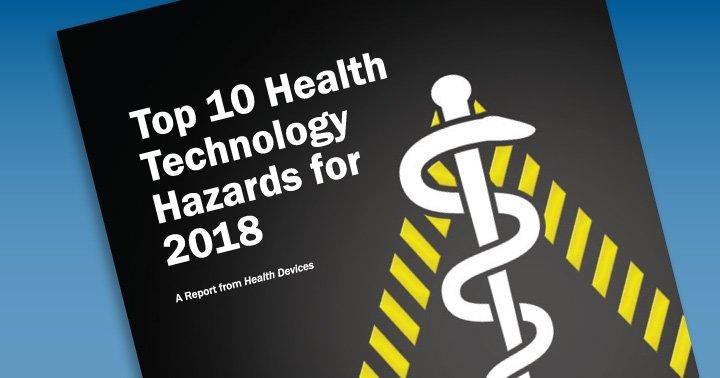Top 10 Health Technology Hazards for 2018: Ransomware and other Cybersecurity Threats Top the List

The ECRI Institute released it’s 2018 report of the Top 10 Health Technology Hazards of the year. Each year, the list is chosen regarding which hazards should receive the utmost priority in the coming year and is based upon the research and feedback of engineers, scientists, nurses, physicians, and safety analysts. All items in the list must be avoidable or mitigated through management and technologies.
Topping the list for 2018 is ransomware and other cybersecurity threats. These types of threats are no longer seen as an issue for solely the IT department. Ransomware and other cybersecurity threats can critically disrupt patient care and safety. In information security, the CIA Triad model highlights the importance of confidentiality, integrity, and availability. Ransomware and other cybersecurity threats most notably threaten the availability of patient information and therefore have the potential to disrupt care.
“In a healthcare environment, a malware attack can significantly impact care delivered by rendering health IT systems unusable, by preventing access to patient data and records, and by affecting the functionality of networked medical devices,” says ECRI Institute.
Below is the ECRI Institutes full list of the top 10 Health Technology hazards of the Year:
- Ransomware and Other Cybersecurity Threats to Healthcare Delivery Can Endanger Patients
- Endoscope Reprocessing Failures Continue to Expose Patients to Infection Risk
- Mattresses and Covers May Be Infected by Body Fluid and Microbiological Contaminants
- Missed Alarms May Result from Inappropriately Configured Secondary Notification Devices and Systems
- Improper Cleaning May Cause Device Malfunctions, Equipment Failures, and Potential for Patient Injury
- Unholstered Electrosurgical Active Electrodes Can Lead to Patient Burns
- Inadequate Use of Digital Imaging Tools May Lead to Unnecessary Radiation Exposure
- Workarounds Can Negate the Safety Advantages of Bar-Coded Medication Administration Systems
- Flaws in Medical Device Networking Can Lead to Delayed or Inappropriate Care
- Slow Adoption of Safer Enteral Feeding Connectors Leaves Patients at Risk.
Cybersecurity Is Now a Part of Patient Care
The physical cleanliness of mattresses and bed sheets may seem to juxtapose ransomware and other cybersecurity threats. But with advancements in health technology and increased interconnectivity of patient care i.e. electronic medical records, revenue cycle systems, patient care systems – these threats are all interrelated and are holistically components of the web that is patient care in the digital era. Organizations should take a multi-layered security approach where cybersecurity and data protection is an integral part of patient care — creating trust between patient and care provider.
Learn more about securing patient information in the age of advanced threats and health technology with Imprivata FairWarning’s Imprivata FairWarning Patient Privacy Intelligence solution.
